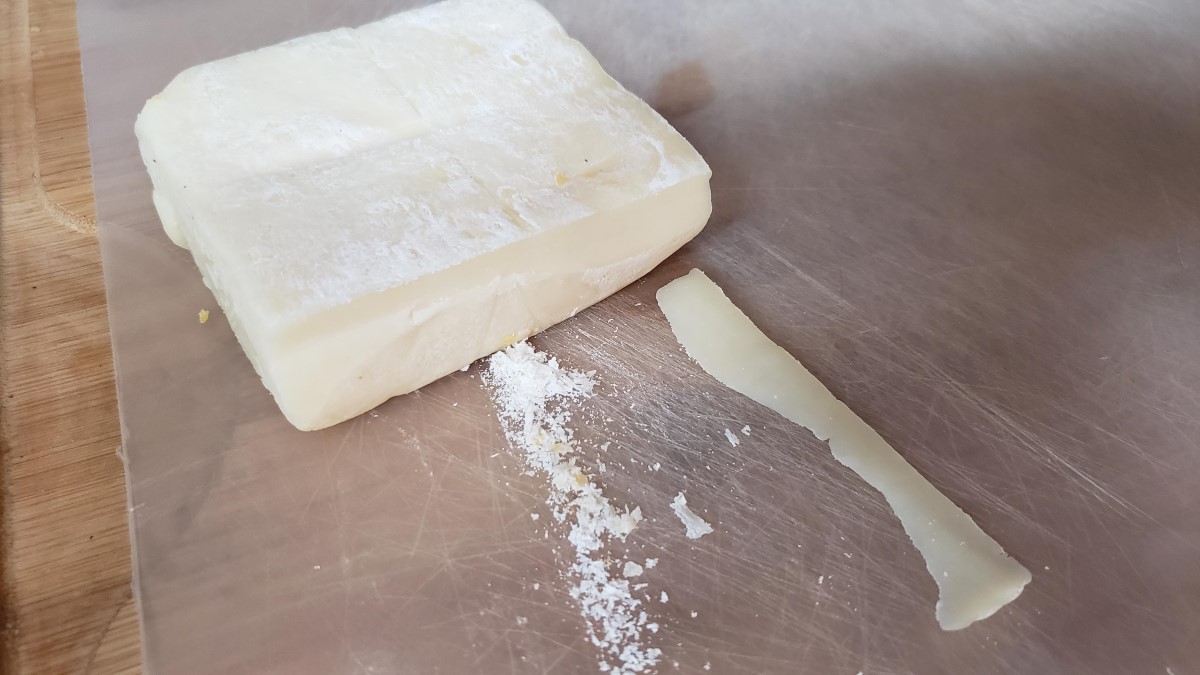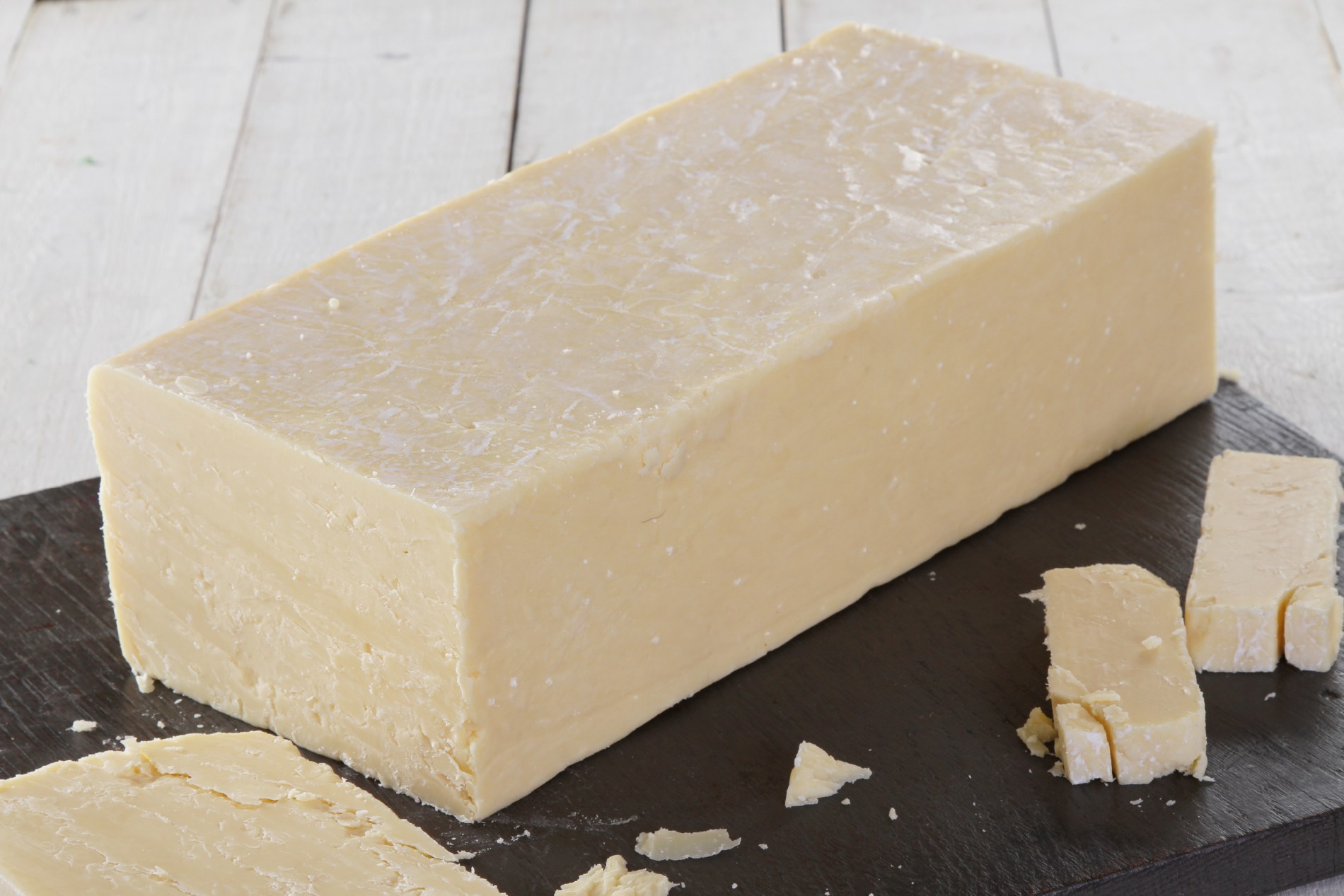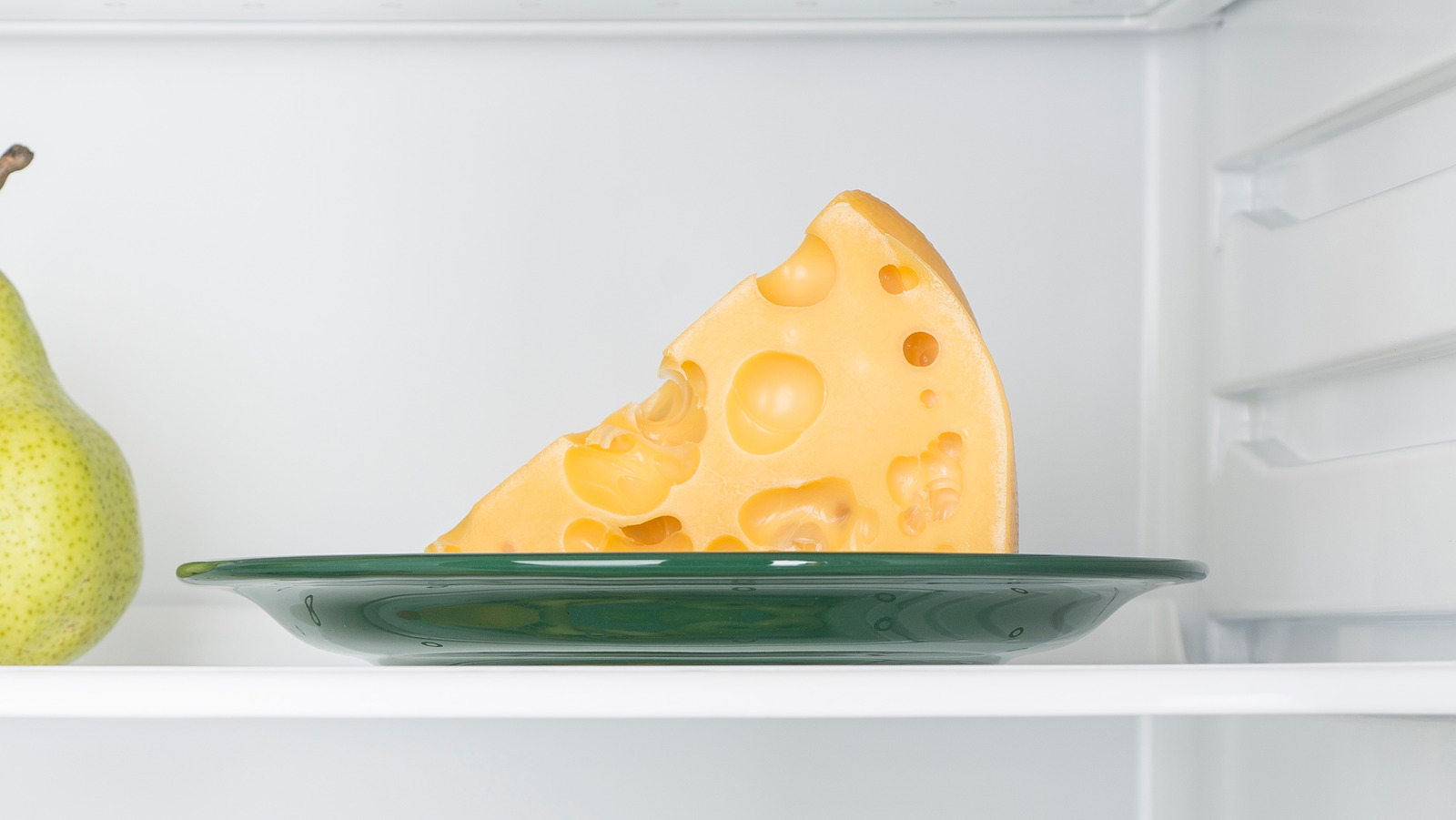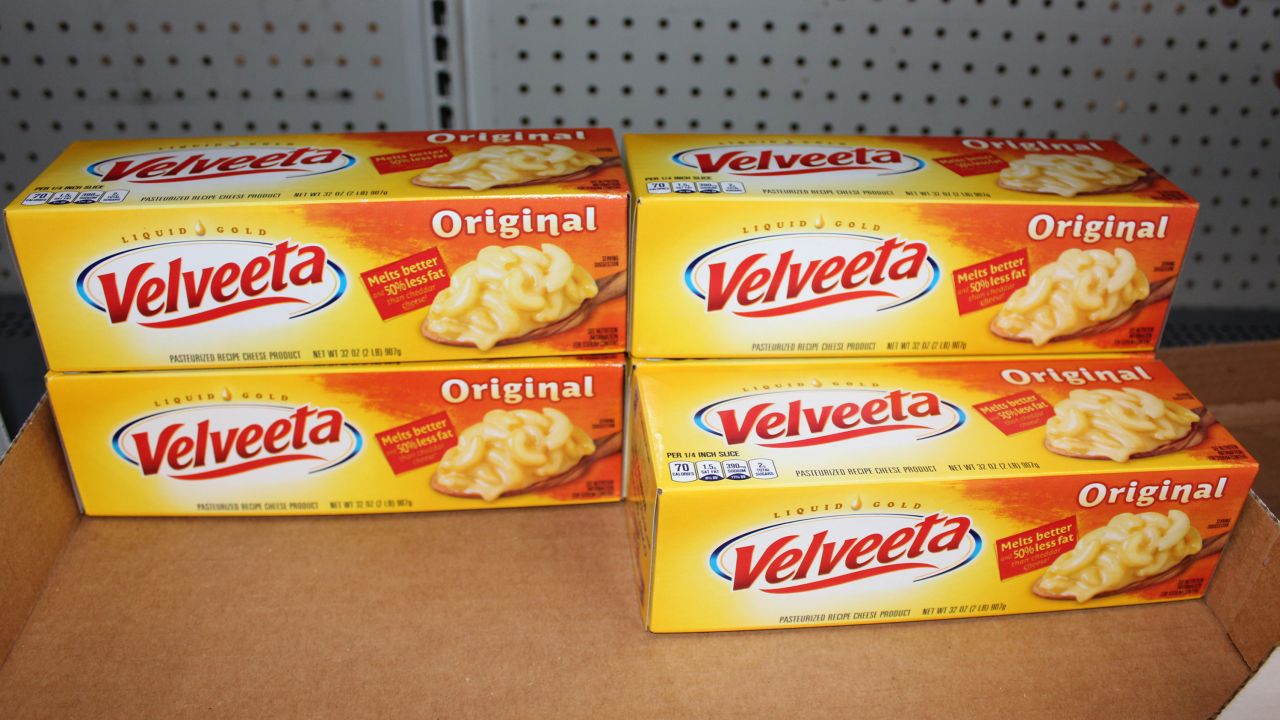

Articles
How To Store Cheddar Cheese
Modified: October 20, 2024
Learn the best techniques and tips for storing cheddar cheese in this informative article. Keep your cheese fresh and delicious for longer periods!
(Many of the links in this article redirect to a specific reviewed product. Your purchase of these products through affiliate links helps to generate commission for Storables.com, at no extra cost. Learn more)
Introduction
Welcome to the world of cheddar cheese! Whether you’re a cheese connoisseur or simply love to indulge in its rich and creamy flavors, knowing how to store cheddar cheese properly is essential to preserve its taste and texture. Cheddar cheese is a versatile cheese that can be enjoyed in various dishes or on its own, but improper storage methods can cause it to spoil quickly or lose its flavor.
In this article, we will explore the factors to consider when storing cheddar cheese, different storage options, proper packaging techniques, and tips for maximizing the shelf life of your favorite cheese.
So, let’s dive into the fascinating world of cheddar cheese storage and ensure that every slice, cube, or wedge of cheddar you enjoy is as delicious as it can possibly be!
Key Takeaways:
- Proper storage of cheddar cheese involves maintaining temperature, humidity, and airflow. Refrigeration is best for long-term storage, while room temperature is suitable for short-term consumption.
- When storing cheddar cheese, proper packaging is crucial. Use wax paper, plastic wrap, or airtight containers to maintain freshness. Remember to check for signs of spoilage and utilize stored cheese in various dishes for a delightful culinary experience.
Read more: How To Store Cotija Cheese
Factors to Consider for Storing Cheddar Cheese
When it comes to storing cheddar cheese, there are several factors that you should keep in mind to maintain its freshness and quality. These factors include:
- Temperature: Cheddar cheese is sensitive to temperature changes, so it’s important to store it in a suitable environment. Extreme temperatures can cause the cheese to spoil or develop off-flavors. Therefore, it’s essential to maintain a consistent temperature for optimal storage.
- Humidity: Humidity plays a crucial role in cheese storage. Too much humidity can lead to moisture buildup, which promotes the growth of mold and can result in spoilage. On the other hand, low humidity can cause the cheese to dry out and become crumbly.
- Airflow: Proper airflow is necessary to prevent the cheddar cheese from becoming too moist or dry. Sufficient airflow helps to maintain the ideal moisture balance and prevents the growth of bacteria or mold.
Considering these factors will ensure that your cheddar cheese stays fresh and retains its delicious taste. Now, let’s explore the different storage options for cheddar cheese.
Storing Cheddar Cheese at Room Temperature
Storing cheddar cheese at room temperature can be a convenient option if you plan to consume it within a few days. Room temperature storage allows the cheese to retain its flavor and texture without the risk of it drying out or becoming too cold.
Here are some guidelines to follow when storing cheddar cheese at room temperature:
- Choose the right spot: Find a cool, dry place away from direct sunlight and heat sources. Ideal spots include a cheese drawer or a pantry shelf.
- Wrap it properly: To prevent the cheddar cheese from drying out or absorbing odors, wrap it tightly in wax paper or parchment paper. Then, place it in a resealable plastic bag or an airtight container.
- Rotate and check: Regularly rotate the cheese to ensure even exposure to air and inspect it for any signs of mold or spoilage. If you notice any mold growth, discard the affected portions and rewrap the remaining cheese.
Please note that storing cheddar cheese at room temperature is not recommended for long-term storage. If you need to store the cheese for an extended period, refrigeration is the preferred option.
Now that we’ve covered room temperature storage, let’s explore the next option: storing cheddar cheese in the refrigerator.
Storing Cheddar Cheese in the Refrigerator
Refrigeration is the most common and effective method for storing cheddar cheese, especially if you want to extend its shelf life. The cool temperature of the refrigerator helps slow down the growth of bacteria and extends the freshness of the cheese.
Follow these tips to properly store cheddar cheese in the refrigerator:
- Keep it cold: Set your refrigerator temperature between 35°F (1.7°C) and 40°F (4.4°C) for optimal cheese storage. Avoid placing the cheese near the door or in the back of the refrigerator where temperatures fluctuate.
- Wrap it right: Wrap the cheddar cheese tightly in wax paper or plastic wrap to prevent it from drying out and to preserve its flavors. Alternatively, you can store it in a resealable bag or an airtight container.
- Separate and label: It’s important to store cheddar cheese away from other strong-smelling foods as it can absorb odors. Additionally, label the cheese with the date of purchase to help keep track of its freshness.
Remember to consume the cheddar cheese within the recommended time frame. If the cheese develops mold or an off odor, it’s best to discard it to avoid any risk of foodborne illness.
Now that you know how to store cheddar cheese in the refrigerator let’s move on to the next topic: proper packaging.
Store cheddar cheese in the original packaging or wrap it tightly in wax paper or plastic wrap. Place it in the warmest part of the fridge, such as the vegetable drawer, to prevent it from drying out.
Proper Packaging for Storing Cheddar Cheese
The packaging plays a crucial role in maintaining the freshness and quality of cheddar cheese. Proper packaging helps to protect the cheese from moisture loss, mold growth, and absorption of unwanted odors. Here are some tips for appropriately packaging cheddar cheese:
- Wax Paper or Parchment Paper: To prevent the cheese from drying out, wrap it in wax paper or parchment paper. These materials allow the cheese to breathe and maintain its moisture balance.
- Plastic Wrap or Resealable Bags: Once the cheddar cheese is wrapped in wax paper or parchment paper, seal it tightly in plastic wrap or place it in a resealable bag. This additional layer helps to further protect the cheese from moisture and potential contamination.
- Airtight Containers: Alternatively, you can store cheddar cheese in an airtight container. Make sure the container is clean and free from any lingering food odors that could affect the flavors of the cheese.
Remember to label the packaged cheese with the date of purchase to keep track of its freshness. It’s also a good practice to check the cheese regularly for any signs of mold or spoilage. If you notice any mold growth, remove the affected portion and rewrap the remaining cheese.
By properly packaging your cheddar cheese, you can ensure that it stays fresh and delicious for longer periods.
Now that we’ve covered proper packaging for storing cheddar cheese, let’s move on to discussing the length of storage.
Read more: How To Store Gruyère Cheese
Length of Storage for Cheddar Cheese
Cheddar cheese, like many other cheeses, has a limited shelf life. It is important to know how long you can store cheddar cheese to ensure its quality and safety. The length of storage depends on several factors, including the cheese’s freshness at the time of purchase and the storage conditions. Here are some general guidelines for the length of storage:
- Unopened Cheddar Cheese: If the cheddar cheese is unopened and properly stored in the refrigerator, it can last for about 1 to 2 months beyond the printed date on the packaging.
- Opened Cheddar Cheese: Once you open the cheddar cheese, it is important to consume it within 1 to 2 weeks for the best quality. However, some varieties of cheddar cheese can last slightly longer, especially if stored properly.
- Aged or Matured Cheddar Cheese: Aged cheddar cheese, which has gone through a longer aging process, can last for several months or even up to a year when stored properly in the refrigerator.
- Freezing Cheddar Cheese: Cheddar cheese can be frozen for longer-term storage. However, freezing can affect the texture and taste of the cheese. It’s best to use frozen cheddar cheese within 3 to 6 months for the best quality.
Remember that these are general guidelines, and the actual shelf life may vary depending on the specific brand, quality, and storage conditions. Always use your senses to assess the cheese before consuming it. If the cheese shows signs of spoilage, such as mold growth, unpleasant odor, or texture changes, it’s best to discard it.
Now that you know how long you can store cheddar cheese, let’s discuss the signs of spoilage to look out for.
Signs of Spoilage in Cheddar Cheese
It is important to be able to identify the signs of spoilage in cheddar cheese to ensure you’re consuming safe and delicious cheese. Here are the common signs of spoilage to look out for:
- Mold: One of the most obvious signs of spoilage is the presence of mold on the cheddar cheese. If you notice any fuzzy, green, blue, or black spots on the cheese, it is an indication that it has spoiled. Discard the affected portion and assess the rest of the cheese for any mold growth.
- Off Odor: Cheddar cheese should have a pleasant, slightly tangy aroma. If you notice an unpleasant or sour smell coming from the cheese, it may be spoiled. Trust your sense of smell and discard the cheese if it doesn’t smell right.
- Texture Changes: Cheddar cheese should have a smooth and firm texture. If you observe any softness, sliminess, or crumbly texture, it could be a sign of spoilage. These texture changes indicate that the cheese has undergone some undesirable bacterial growth.
- Unpleasant Taste: Spoiled cheddar cheese will likely have an off or sour taste. If the taste is significantly different from what you’re accustomed to, it is best to discard it.
It’s important to note that cheddar cheese is a natural food product, and a small amount of mold on the surface can be trimmed off before consuming the cheese. However, if the mold is extensive or if there are any other signs of spoilage, it is best to err on the side of caution and discard the entire piece of cheese.
Now that you know the signs of spoilage, let’s move on to some useful tips for using stored cheddar cheese.
Tips for Using Stored Cheddar Cheese
Stored cheddar cheese can still be incredibly delicious and versatile when used in various dishes. Here are some tips for making the most of your stored cheddar cheese:
- Grating or Shredding: If your cheddar cheese has become slightly dry or crumbly, consider grating or shredding it. Grated cheddar can be used to top casseroles, pizzas, or salads, while shredded cheddar is perfect for melting over dishes like nachos or grilled cheese sandwiches.
- Melting: Cheddar cheese melts beautifully, making it a fantastic choice for adding a creamy and flavorful touch to dishes. Melt it over vegetables, burgers, or baked potatoes for a mouthwatering experience.
- Slicing: If your cheddar cheese is still in good condition, slice it to create perfect sandwich fillings or cheese platter additions. Enjoy it on its own or pair it with crackers, fruits, or cured meats for a delightful snack or appetizer.
- Cooking: Cheddar cheese can lend its rich and tangy flavors to a wide range of cooked dishes. Use it in macaroni and cheese, quiches, omelets, or even as a flavorful addition to soups and sauces.
- Freezing: If you have more cheddar cheese than you can use, consider freezing it for later. Wrap it securely in plastic wrap or foil, and place it in a freezer bag. Frozen cheddar cheese can be used for cooking or grated directly from frozen onto dishes like pasta or casseroles.
Remember to always assess the quality of the cheese before using it. If there are any signs of spoilage or off-flavors, it’s best to discard the cheese to avoid any potential health risks.
With these tips, you can make the most of your stored cheddar cheese and enjoy its delicious flavors in a variety of dishes.
Now that you’re equipped with the knowledge of storing and using cheddar cheese, go ahead and explore the wonderful culinary possibilities this versatile cheese has to offer!
Frequently Asked Questions about How To Store Cheddar Cheese
Was this page helpful?
At Storables.com, we guarantee accurate and reliable information. Our content, validated by Expert Board Contributors, is crafted following stringent Editorial Policies. We're committed to providing you with well-researched, expert-backed insights for all your informational needs.















0 thoughts on “How To Store Cheddar Cheese”